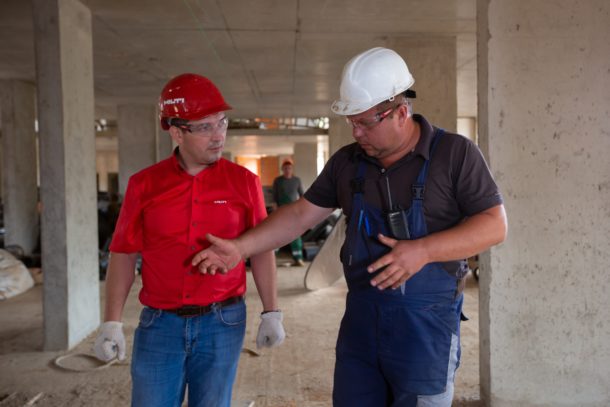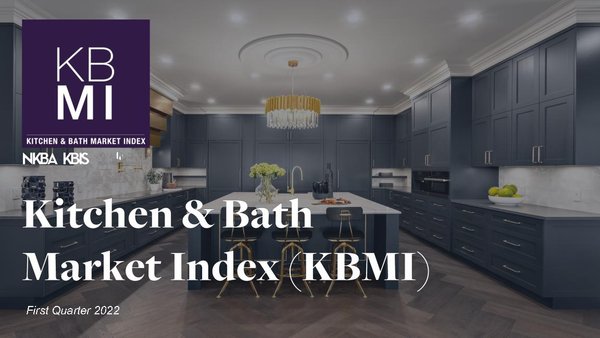Over 50% of Contractors Cite Labor Shortage, Overhead Costs, and Supply Chain Constraints as Biggest Ongoing Challenges ServiceTitan, a leading software platform built to power the trades, today released its second annual Commercial Service Report, highlighting current trends and market sentiment for the commercial industry in 2024. The report surveyed over 1,000 commercial contractors across Read more
Survey

Over 50% of Contractors Cite Labor Shortage, Overhead Costs, and Supply Chain Constraints as Biggest Ongoing Challenges
ServiceTitan, a leading software platform built to power the trades, today released its second annual Commercial Service Report, highlighting current trends and market sentiment for the commercial industry in 2024. The report surveyed over 1,000 commercial contractors across various trades and found that in the face of economic challenges, contractors remain resilient and are doubling down on sales and marketing while adopting new technology to help drive customer and business growth.
“Commercial contractors are essential to building and maintaining our critical infrastructure across North America – they keep our businesses, schools, hospitals and more up and running at all times,” said Alex Kablanian, General Manager of Commercial & Construction at ServiceTitan. “These contractors have displayed incredible resiliency, navigating formidable economic challenges in recent years. Adopting new technology has played a significant role in empowering them to accelerate and achieve profitable growth in their industry. The commercial contractors who are harnessing the power of software and innovation now have the tools they need to reach new heights and greater potential than ever before.”
ServiceTitan’s findings provide a unique perspective on the industry’s performance while highlighting key developments shaping the path forward.

Contractors focus on new growth in 2024
Despite market uncertainties and macroeconomic challenges, 39% of commercial contractors expressed optimism for 2024 – a 17% increase compared to last year’s study, when only 22% of contractors had a positive outlook for 2023.
While commercial contractors remained resilient despite economic challenges in recent years, a significant majority of contractors’ revenue (71%) either decreased or stayed the same in 2023. In light of this, two-thirds (67%) of commercial contractors are focused on growing revenue in 2024, followed by improving cash flow (30%), optimizing processes (33%), and retaining customers (26%).
Supply chain disruptions expected to persist
For most contractors, ongoing supply chain challenges make sourcing parts (53%) and equipment (34%) difficult. The report also highlights how the effects of supply chain disruptions extend to project timelines—only 14% of commercial contractors delivered more than 90% of their projects on time. Material lead time also increased for 52% of commercial contractors; in comparison, equipment lead time increased for 62% of commercial contractors.
In assessing how contractors navigate these challenges, the results indicate that nearly two-thirds of contractors (63%) keep inventory on hand, and roughly a third of businesses (37%) order supplies as needed. Further assessment of supply chain management reveals that 50% of commercial contractors order directly from the supply house, with the rest split evenly between vendor and manufacturer purchases.
Amid labor shortages, contractors increase technician salaries
Labor shortages (53%) and overhead costs (50%) are cited as the primary risks to achieving contractors’ 2024 goals, with economic recession (49%), increase in material prices (35%), and access to working capital (26%) rounding out the top five risks.
Just as ongoing labor shortages make it challenging for contracting businesses to find skilled workers, the shortage of talent and the increased cost of living make salaries a determining factor in attracting and retaining technicians. In response to these trends, 73% of respondents still plan to increase technician salaries this year.
Software adoption accelerates
Current trends and market sentiment point toward software as a leading solution to streamline commercial contractor operations and improve efficiencies without increasing overhead. In fact, the average commercial trade business uses 4-6 software providers, with a high adoption rate (70%) of Field Service Management software. Correspondingly, a significant 43% of businesses plan to increase their investment in sales and marketing activities in 2024.
With technology becoming increasingly essential for contracting businesses, it is key to take full advantage of the capabilities and innovate accordingly. Based on the survey, there is room for improvement—while 30% of survey respondents identified improved cash flow as their top goal, 20% of contractors still take more than a week to send invoices, and 33% of customer payments are more than one week late.
To review the full findings and key takeaways, download ServiceTitan’s Commercial Markets Report here.
About the research
This research was conducted by Thrive Analytics on behalf of ServiceTitan, polling more than 1,000 commercial service contractors representing a variety of geographical regions, business growth stages, and revenue levels. This research is for informational purposes only and ServiceTitan provides no assurances (express or implied) with respect to the accuracy of the survey data.

Growth bolstered by an increase in price points despite material shortages and higher labor costs The National Kitchen & Bath Association (NKBA) – the world’s leading non-profit trade association for the kitchen and bath industry providing tools, research, certification, and events to thousands of professionals – has released its Kitchen & Bath Market Index (KBMI) for Q1 Read more
Growth bolstered by an increase in price points despite material shortages and higher labor costs
The National Kitchen & Bath Association (NKBA) – the world’s leading non-profit trade association for the kitchen and bath industry providing tools, research, certification, and events to thousands of professionals – has released its Kitchen & Bath Market Index (KBMI) for Q1 of 2022. The quarterly report, which is aimed at measuring the health of the kitchen and bath industry, found that the industry enjoyed a successful opening quarter of the year, growing 12.6% in Q1, with industry professionals expecting further growth as the year continues.

“Despite a number of ongoing economic hardships, from material shortages to higher labor costs, we’re excited to see our industry continue to grow and be optimistic about the future,” said Bill Darcy, Chief Executive Officer, NKBA. “As the world shifts toward a new normal, we’ve seen the kitchen and bath industry continue to adapt to the times by evolving e-commerce practices, stocking up on available products, and turning toward historically underutilized brands to fulfill customer needs.”
While price points have continued to rise, demand for remodeling projects has stayed strong, enabling the industry to continue to grow in the new year. In the KBMI Q1 report, all kitchen and bath industry segments reported high single-digit sales growth year-over-year (YOY) except for manufacturers, who reported double-digit sales growth of 10.3%. Not only were sales numbers up compared to 2021, but quarter-over-quarter (QOQ) sales accelerated for all segments of the industry.
2022 full-year sales growth expectations have also increased after a successful first quarter, with professionals anticipating +15.1% growth for the year, up from the 9.4% reported just three months ago. In the latest KBMI report, the kitchen and bath industry rated future business conditions a 78.6 on a 100-point scale, displaying cautious optimism about the future of the industry. Rising interest rates and low resale inventory have been tailwinds for big remodeling projects as consumers leverage home equity and other discretionary income to ‘trade up in place.’ Despite additional inflationary pressures potentially pricing out some homeowners, the industry reported a healthy number of backlogged projects, allowing the sector to feel confident about the road ahead.
“From manufacturers and designers to contractors and retailers, the entire kitchen and bath industry has had to adjust to the ever-evolving times that we live in. Despite the ongoing headwinds and potential unknown challenges ahead, all signs currently suggest that 2022 will be another strong year for the industry,” continued Darcy.
Among the report’s key findings were:
- Material Shortages Cause Delays and Cancellations: As the ongoing worldwide material shortage continues, kitchen and bath industry professionals have reported serious delays to their projects. Forty-three percent (43%) of building and construction firms report most of their projects were behind schedule in Q1 2022. Firms have tried to get out ahead of projects by pre-ordering as often as they can, however, industry-wide backorders and shipping delays prevent them from maintaining timelines. A further consequence of these material delays has been client cancellations due to long timelines, as 46% of building and construction firms had clients cancel and/or postpone projects in Q1. While this is a slight improvement from Q4 2021’s 50% cancellation/postponement rate, the trend continues to be a concern for the industry moving forward.
- Luxury Products In Demand, Come With Longest Lead Times: The KBMI for Q1 2022 found that luxury products once again are the most popular category for consumers. However, these products also come with the longest wait times. An increasing number of industry professionals (55%) report differing lead times across luxury, mass market, and entry-level products/materials. Seventy-nine percent (79%) of those indicating a difference say lead times for luxury products/materials are the longest. Consumers choosing to move forward with big project remodels are often opting for high-end products, associating quality and durability with the higher price tag.
- Labor Remains Elusive and Expensive: Industry professionals reported labor availability as having a significant impact on their businesses and their ability to keep up with demand, rating the overall impact a 6.7 on a 10-point scale. Industry professionals continue struggling to find qualified labor, raising rates by 18% on average to retain and/or attract talent. Seventy-six percent (76%) of designers are increasing labor rates 21% on average to retain existing employees, saying competition for qualified labor is fierce.
To learn more, visit here.
